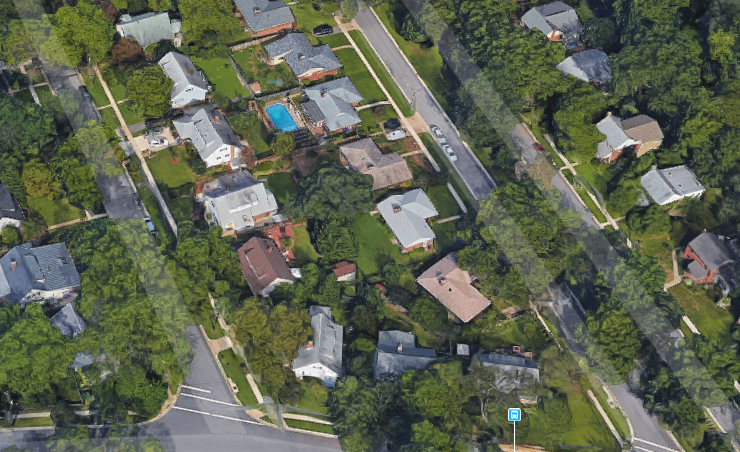Can transforming suburban places to walkable urban ones be successful and popular?

Suburbs in Forest Glen, Maryland. Image created with Google Maps.
Classic suburban places were designed entirely around car travel, but today, many leaders recognize problems with that design, from inaccessibility for the young, old, and persons with disabilities, to greater pollution and lower levels of exercise, to the sheer expense of maintaining so many roadways. That's why many counties are trying to bring walkable urbanism to suburban places, such as Fairfax County with Tysons Corner.
Suburban areas around the US are evolving to become more urban. As it happens, there's a growing debate about when and where change works, and what it should look like. A new book called Suburban Remix, by Jason Beske and David Dixon, looks at case studies (including Tysons) and gives tips for areas trying to transform suburban layouts into walkable urban places.
In response to news of this book, contributor Gray Kimbrough pointed out, “Suburban retrofitting is absolutely needed, and has the potential to help lots of people live better lives (particularly as they age in place), but…the suburbs are full of homeowners who often fear or detest change. We've seen this over and over again in Montgomery County, as people who bought houses thinking they were living in at best barely-walkable suburbs are fighting hard against basic efforts to build denser housing, mix uses better, and make the area more walkable. How do we deal with such strong opposition as we work to improve suburbs?”
GGWash's contributors took up those questions in a recent discussion, which ended up focusing on Prince George's County. Here's the summary:
Sanjida Rangwala said,
I think that few people are opposed to walkability in the abstract. I've been able to have perfectly civil conversations with people when we stick to framing things as “safety.” The problem comes, at least in the Silver Spring area, with the deep suspicion of developers (someone somewhere may make money from this), and of course the deep fear of any driver inconvenience and of change cloaked in the idea that schools and roads will be overcrowded.
Dan Reed added,
I think (at least here in the DC area) we have somewhat overcome the issue of redeveloping suburban commercial areas — it’s been a thing for 40+ years in Montgomery County, and for the most part people around downtown Silver Spring, Bethesda, etc are okay with the idea that there will be some big buildings around the Metro station.
MoCo (and I imagine Arlington, Fairfax, etc) made this deal with the devil: we’ll draw an imaginary line around the Metro station where new things can go, and your neighborhood on the other side of the line will be safe. Tons of apartments have been built in the core of Silver Spring in the past 15 years and they rarely get challenged by neighbors, even if they do complain. But people now use that as an excuse to say that development shouldn’t happen anywhere else. Marc Elrich, who is running for county executive, has frequently said that he would ban ALL development more than a 1/2 mile from a Metro station.
DW Rowlands shared,
I've seen the fear of developers and “tall buildings” a good deal in Prince George's, too. My mom, who grew up in a walkable part of Detroit and now lives in New Carrollton, claims to like walkable areas, but becomes incredibly upset at the thought of townhouses (they share walls!) or buildings more than a story or maybe two tall. She also very quickly falls into complaining about everything being done to benefit the developers, who are assumed to be evil.
I will be very curious to see if the development in the works for the College Park and New Carrollton stations' surface parking actually becomes a thing. The New Carrollton station does have the advantage of having nothing too close to it except low-income garden apartments and industrial area.
Bradley Heard said,
Regarding the Prince George's County zoning rewrite, I think there is a good middle ground — allowing for denser residential uses within a mile of transit, such as duplexes, townhomes, small apartment houses, etc. while generally preserving the detached residential character of older neighborhoods.
For neighborhoods within 1/2 mile of transit, like those at Capitol Heights, there shouldn't be an exemption from the Transit-Oriented Development (TOD) Zone, other than the ordinary exemption that any existing nonconforming use is allowed to remain or be repaired/maintained. Otherwise, you're basically killing TOD opportunities around those particular Metro stations. And I say that as someone who lives in a Single Family Residential (SFR) zone within a half-mile of Metro!
Tracy Loh added,
There is a planned Purple Line station much closer to that Riverdale Park end of College Park. The bottom line is that the College Park Metro is in the wrong place relative to the historic and existing urban form, and that's shaping development more than transit infrastructure. Hopefully the Purple Line will get it right.
The current draft of the Prince George's zoning rewrite does contain a Single Family Residential (SFR) zone that allows townhouses, etc. So this is really not so much a zoning rewrite question as a policy question about how current SFR zones will be translated to the new zones.
Toni Camilli said,
We should think about legally precluding areas around metro stations from becoming historic districts (though a very cool old building might warrant historic protection).
This is basically the situation around the Takoma metro station — loads of low-density storefronts and single family homes are frozen in time and will never become dense housing, which has the resulted in keeping density so low that the business district struggles to survive. It's so incredibly frustrating that I've started looking into how to unwind a historic district.
How do you think suburban retrofitting can meet the needs of communities in a way that's both effective and popular?
